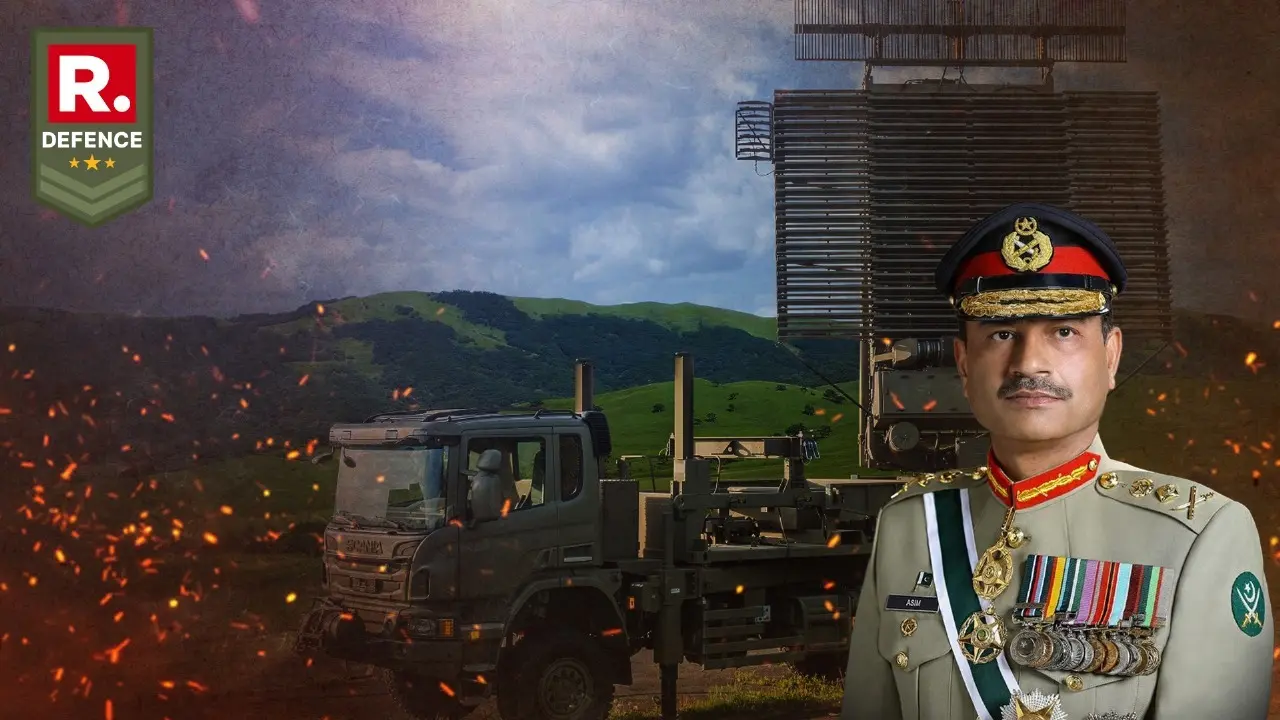Updated 30 April 2025 at 18:54 IST
Pakistan Deploys TPS-77, Abandons LoC Bunkers Fearing India’s Retaliation to Pahalgam Attack
The April 22 Pahalgam attack in Kashmir, which killed 26 civilians, has triggered severe escalation between India and Pakistan.
- Defence News
- 4 min read

New Delhi, India - The April 22 massacre in Kashmir's Pahalgam valley left 26 dead in what is now India’s deadliest terror incident since 26/11. Terrorists armed with M4s and AK-47s ambushed civilians in Baisaran, turning a scenic retreat into a bloodbath. Claimed briefly by The Resistance Front (TRF), an offshoot of Lashkar-e-Taiba, the responsibility was later suspiciously retracted.
New Delhi wasted no time. Pakistan was named—specifically its military and intelligence arms—as the alleged enablers of this carnage. Diplomatic ties were slashed: Pakistani diplomats were expelled, the Indus Waters Treaty suspended, and the Attari border crossing sealed shut. The fallout was immediate, with Islamabad retaliating by blocking its airspace and trade routes.
TPS-77 Radar Systems Repositioned in Sialkot as Pakistan Braces for Retaliation
With airspace closures and military alerts mounting, Islamabad is not treating this like just another cross-border flare-up. Intelligence imagery confirms that Pakistan has moved TPS-77 Multi-Role Radars close to Sialkot, just 58 km from the border. With 360-degree coverage and detection capabilities up to 470 km, these American-built systems are now primed for early warning against Indian aircraft.

Technical specs suggest the deployment is not posturing. The TPS-77 operates in the 1215–1400 MHz band, pushing 19.9 kW of RF power, with a 27.1 sqm aperture. Detection of even stealth-enabled aircraft is possible at medium range. The same radar family was deployed during the post-Balakot standoff in 2019, underscoring Pakistan’s acute concern about an Indian repeat strike.
Advertisement
Simultaneously, Chinese-made DWL-002 passive detection systems have been seen near the Ferozepur and Samba sectors. These systems don’t emit signals, making them hard to detect, but they can triangulate and jam incoming radar or satellite-based navigation systems. Pakistan’s jamming footprint has expanded drastically across the LoC, with commercial drones reporting severe GNSS blackouts in Jammu.
Pakistan’s Alert Posture Reveals Foreknowledge Of Indian Retaliation
What adds a darker shade to Pakistan’s radar and EW frenzy is the possibility that elements within its establishment had prior knowledge of the Pahalgam attack. Pakistan’s Defence Minister’s statement warning of a “likely Indian attack within days” came even before India formally announced retaliatory measures. Observers in Delhi interpret this as either an intelligence feat or an indirect admission of culpability.
Advertisement

Ceasefire violations along the LoC have spiked since the Pahalgam killings. Small arms fire, mortar shelling, and even use of Loitering Munitions have been reported from Uri to Poonch. Civilians in these border areas have begun premature crop harvests and overnight evacuations. Simultaneously, Indian security forces have launched an aggressive crackdown in Kashmir, raiding suspected hideouts and detaining over 70 individuals linked to separatist networks.
LoC Tensions Flare As Pakistani Troops Abandon Bunkers In Naushera, Kupwara, Baramulla
Amid heavy Indian retaliation to ceasefire violations, Pakistani troops were observed abandoning several frontline bunkers along the LoC. Reports from defence correspondents suggest these were tactical retreats, with national flags removed from vacated posts to avoid detection by Indian drones and precision fire units. The sectors impacted included Naushera, Sunderbani, Akhnoor, Kupwara, and Baramulla—where over 20 Pakistani posts came under direct Indian fire.
The Indian Army’s response was described as “highly calibrated” and “pinpoint accurate,” forcing Pakistani soldiers to pull back from certain vulnerable positions. Independent verification remains limited, but visuals aired by certain local news outlets showed abandoned Pakistani forward posts devoid of any military activity. While sources indicate it was a precautionary move against expected airstrikes, Pakistan’s own media has largely avoided confirming these developments.
India’s Samyukta, Himshakti Edge Out Pakistan’s Patchy Electronic Warfare Framework
Despite Pakistan’s newfound EW assertiveness, the disparity in capability is clear. Islamabad’s jammers are largely commercial-grade, and though the JF-17 Thunder fleet carries radar jamming pods, they lack the integration seen in India’s EW backbone. India’s Army alone fields over 50 platforms—ranging from Samyukta for tactical battlefield use to Himshakti, which blankets large areas with multi-band jamming and surveillance.
Pakistani EW units, meanwhile, remain limited to high-value zones near Karachi and selected LoC points. Reports suggest only 20–25 EW systems are active nationwide. Many are Chinese-supplied and require line-of-sight to function efficiently. The uptick in Pakistani deployment, however, indicates strategic anxiety and an effort to preempt surgical strikes or drone-led incursions.
Watch- Who Is Hashim Musa? Pakistani Para Commando - Turned LeT Terrorist Behind Pahalgam Attack
Published By : Yuvraj Tyagi
Published On: 30 April 2025 at 18:54 IST
